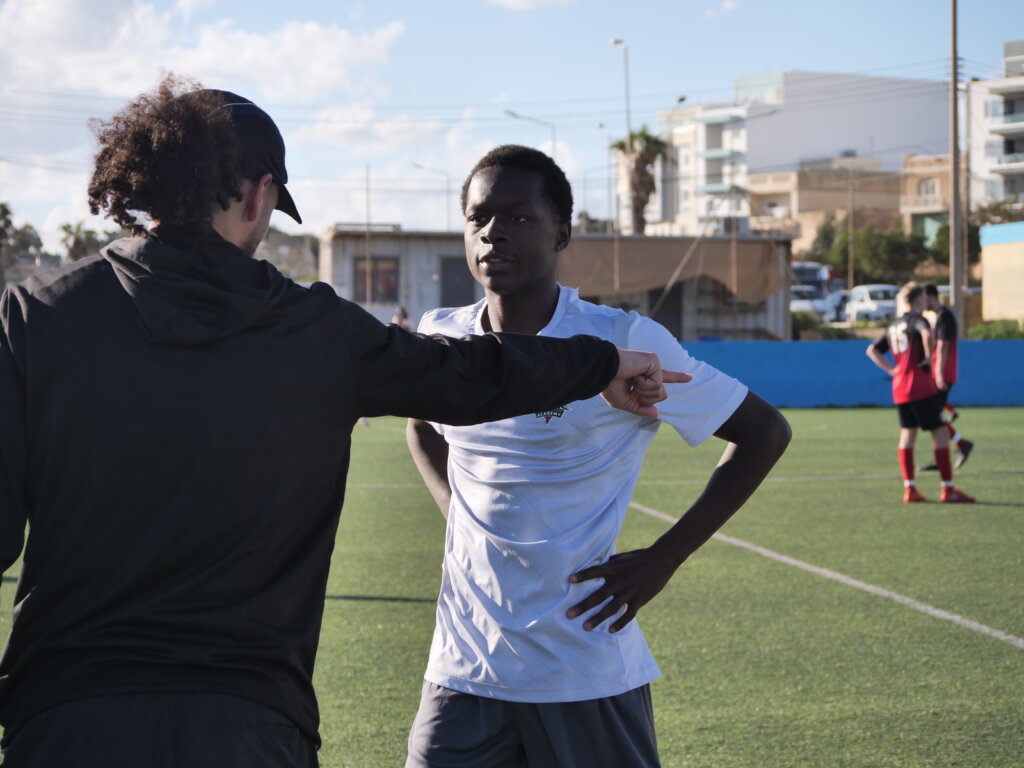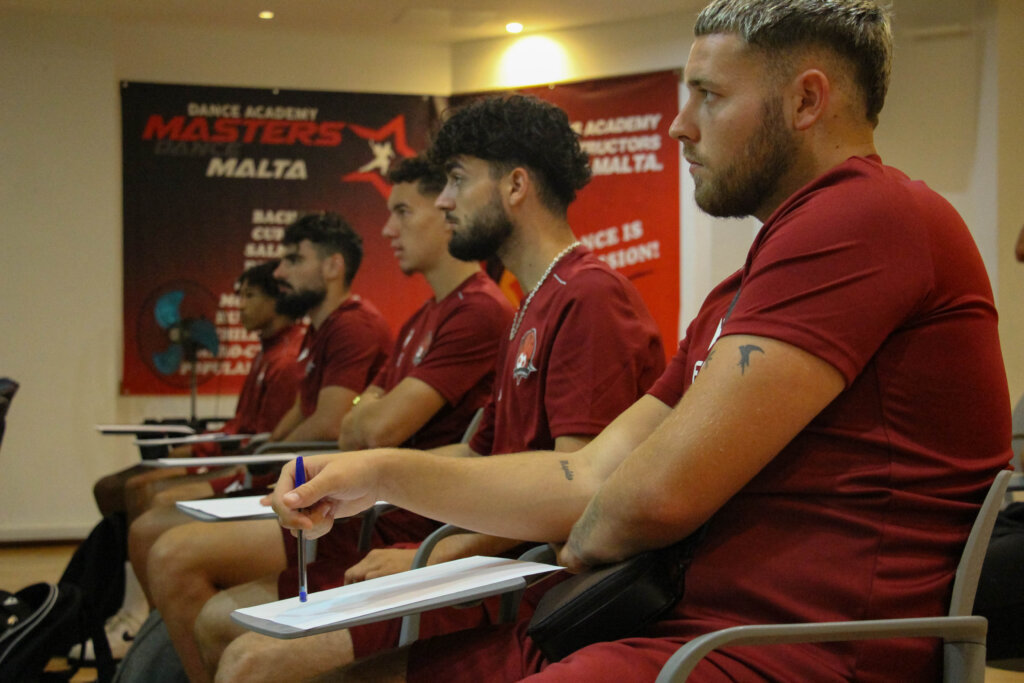Choosing a football academy for your child is a crucial decision that can shape their sporting and personal future. Between marketing promises and the reality on the pitch, how can you find your way?
This crucial step requires a rigorous evaluation of several key criteria.
A quality football academy can transform a young enthusiast into a well-rounded athlete, while also providing them with a comprehensive education. However, not all academies are the same. Some focus on short-term performance, while others prioritise the player’s overall development.
Summary
What is a football academy and what are the benefits of it?
Definition of a football academy
A football academy is a specialised institution dedicated to training young players. It combines intensive sports training, personalised medical monitoring, and tailored academic support. These centres of excellence aim to develop emerging talent by providing them with a professional environment.
Academies differ from traditional clubs through their holistic approach. They don’t simply organise weekly training sessions but offer a genuine life project centred around football. This full immersion enables young players to develop more quickly.
The concrete benefits of integrating an academy
Integration into an academy offers several decisive advantages for the development of the young footballer. The first concerns the quality of technical supervision provided by qualified and experienced coaches. These professionals dominate the pedagogical methods adapted to each age group.
The second advantage lies in access to high-level facilities. Regulation-standard pitches, fully equipped gyms, and recovery centres, everything is designed to optimise training conditions. This quality of equipment, rarely found in amateur setups, promotes faster technical progression.
The academy also offers the opportunity to train alongside other motivated young talents. This constant sense of emulation drives each player to push their limits. The competitive environment naturally encourages self-improvement.
The essential criteria for evaluating a football academy
Quality and management qualifications
The coaches’ expertise forms the cornerstone of a quality academy. Check their qualifications: UEFA licences, state diplomas, or federation certifications ensure a recognised level of competence. A good coach combines technical knowledge, effective teaching methods, and experience at the highest level.
Also consider the coach-to-player ratio. A reputable academy maintains small groups, allowing for individualised supervision. This close attention helps correct technical flaws and tailor training exercises to each player’s specific needs.
The stability of the management team is another reliable indicator. A significant turnover suggests that there are internal failures or unsatisfactory working conditions.

Infrastructure and equipment available
The facilities reveal a lot about the gravity of an academy. Adequate land with regulatory dimensions is the minimum acceptable. The ideal includes several playing areas: natural, synthetic and covered ground for training throughout the time.
The complementary equipment deserves attention: clean and functional wardrobe, bodybuilding rooms suitable for young people, recovery spaces, equipped nursing. These details reflect the investment of the structure under the conditions of reception.
Training methodology and educational programme
A high-performing academy structures its training around a clear educational framework. This document outlines the objectives for each age group, the methods used, and the skills targeted. It reflects the academy’s playing philosophy and the values it seeks to promote.
Progressive education is a quality assurance. The program must be adapted to the physical and mental evolution of players. Technical, tactical and physical sessions are balanced according to the needs of each age group.
Educational innovation distinguishes the best academies. The use of digital analysis tools, modern training methods or recovery technologies demonstrates a vanguard approach.
School support and general training
A responsible academy never neglects the educational aspect. School support allows young players to reconcile the passion of football and academic success. This double training ensures your professional future.
There are several modalities: partnerships with schools, integrated support courses, programming arrangements. The goal remains the same: to maintain a satisfactory academic level despite sports constraints.
The best structures also offer training in football professions: arbitration, training, sports management. This opening multiplies professional opportunities in the football world.

Development path and prospects for evolution
A high-quality academy clearly defines the progression steps of its players. This marked road reassures families and motivates young talents. It specifies the objectives to be achieved in order to achieve the next level.
Partnerships with professional clubs are an important asset. These collaborations facilitate detections and open doors to professional football. They also demonstrate the recognition of the work done by the academy.
Individualized support differentiates structures of excellence. Each player receives personalized follow-up, with targets adapted to their potential and identified deficiencies.
Reputation and testimonies of success
The reputation of an academy is specifically measured. How many former residents work in professional teams? What clubs did they recruit? These objective data enable an assessment of the effectiveness of the training provided.
The testimonies of former players and their families provide a valuable vision. They reveal the reality of daily life, the strengths and possible weaknesses of the structure. These genuine comments are usefully complementary to the official submissions.
Institutional recognition also counts. Federal labels, quality certifications or official associations testify to the gravity of the academy.
Practical approaches to identifying the ideal academy
Preliminary searches and detection
Start by identifying the academies in your region. Internet, contacts in the football community, federal technical advisers: multiply sources of information. Make a first list with an approach to geographical proximity and reputation.
Check official websites to understand the philosophy of each structure. Information on training, facilities and sports results guides its projection. Be careful with excessively marketing presentations that sometimes mask important gaps.
Social networks also reveal useful clues. Installation photos, spontaneous testimonies, news: these contents complement your preliminary analysis.
Visits and exchanges with managers
Physical visit remains irreplaceable to evaluate an academy. It allows you to discover real facilities, often different from promotional photos. Note the maintenance status, cleaning of spaces and quality of equipment.
Take this tour to attend a training session. Direct observation reveals the pedagogical quality, the atmosphere of work and the relationships between managers and players. This dive illuminates daily training.
Meet educational and administrative officials. Your answers to your technical questions reflect your experience. The competent management clearly explains its methodology and objectives.
Environment and culture assessment
The general atmosphere of the academy has a direct impact on the development of the young player. A careful and demanding environment promotes progression. On the contrary, an environment that is too permissive or too rigid can hinder development.
Note interactions between players at different levels. A good academy cultivates mutual support and respect. Solidarity among residents is an important factor in personal development.
The values transmitted by the structure must correspond to those of your family. Respect, work, humility: these fundamental principles shape the personality of the future footballer.
Analysis of financial aspects and exchanges
The cost of training in the academy varies considerably according to the structure. To accurately evaluate the full rate: registration, accommodation, restoration, equipment, travel. This global vision avoids unpleasant budget surprises.
Discover the possibilities of scholarships or financial assistance. Some academies offer preferential rates for the young talents detected. These mechanisms democratize access to high-level training.
Compare the services included in the rates. A more expensive academy can be more cost-effective if it incorporates more services: medical follow-up, school support and equipment provided.
Conclusion
Choosing a football academy is an investment in your child's future. This structural decision deserves careful reflection, based on objective criteria and not on the emotion of the moment.
Remember that the best academy matches your family's profile, ambitions and limitations. An inadequate centre of excellence can discourage a young talent, while a more modest but careful structure can reveal its potential.
Do not hesitate to take the time needed for this evaluation. Visit several academies, exchanges with other parents, consult football professionals. This rigorous approach maximizes the chances of success of your choice.

